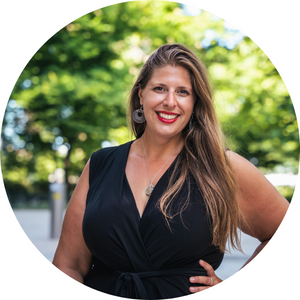Understanding pre-approval for a mortgage
A pre-approval is a commitment by a lender to front you a particular mortgage amount at a set mortgage rate. Getting a pre-approval for a mortgage will help you understand, not only how much home you can afford, but what your mortgage payments will be for your first mortgage term.
This will help you set your budget for the next few years, and make sure the home you buy fits into your financial plan.
If you pre-qualify for a mortgage, you may wonder: Do I still need a pre-approval? What’s the difference?
Pre-qualifying for a mortgage will give you an estimate of how much you can borrow. Your lender assesses your basic financial details to provide this estimate.
A mortgage pre-approval is the next step. With one, you’ll get a budget and potential mortgage interest rate, offering a clearer financial picture.
Think of mortgage pre-qualification like window shopping. You’re checking price tags, considering whether or not you can afford it, and weighing your options. Pre-approval is like heading to checkout – you know the costs and are ready to make a purchase.
Of course, there are some things to do after getting a pre-approval and getting one doesn’t require you to purchase a home. That’s an important thing to keep in mind.
How much home can you afford?
Whether you're hunting for a new home or looking to refinance your mortgage, knowing how much your new loan might cost you is critical. Use our handy mortgage calculator to help you understand what your payments could look like.
Get StartedHow can I get pre-approved for a mortgage?
Like all things financial, there’s a bit of paperwork needed to get approved for a mortgage. Don’t be intimidated, though. We’ve got you covered with a little cheat sheet to get you started.
Step 1: Check your credit score
Before applying for a pre-approval, it's a good idea to check your credit score. Lenders use your credit score to determine your creditworthiness, which affects the interest rate you'll be offered. The higher your score, the better chance of getting a good mortgage rate.
**Read more: **How to get a free credit score
Step 2: Gather your documents
Lenders require various financial documents to determine whether you qualify for a mortgage and at what rate. These typically include:
- T4 forms or tax returns for the past two years
- Pay stubs or proof of income for the past few months
- Bank statements for your chequing, savings and investment accounts
- Any additional income documentation
- Information about your debts, including credit card balances, auto loans, student loans, etc.
Step 3: Find a lender and submit an application
Shop around and compare mortgage lenders to find the best rates and terms. Consider factors such as interest rates, fees, reputation and customer service.
Once you've chosen a lender, you'll need to submit a mortgage application. This can often be done online or in person. Be prepared to provide personal information, employment history and details about the property you're interested in purchasing – pretty much all the documents you gathered in step 2.
Step 4: Receive your pre-approval
Waiting for your approval can take a few days or up to a week. If you're approved, the lender will issue a pre-approval letter. This letter states the maximum amount you're qualified to borrow based on your financial situation.
Step 5: Lock in your rate
If you’ve been offered a good interest rate, lock it in. This means that the lender guarantees the interest rate for a specified period, up to 120 days. If it isn’t as good as you had hoped, don’t be shy about applying for a pre-approval with a different lender. Working with a broker can help you get the best pre-approval, and the best rate possible. So, consider working with one before purchasing your home.
Keep in mind that a pre-approval doesn’t guarantee your approval for the loan. You'll still need to go through the mortgage application process once you've officially made an offer on a home. However, your pre-approval gives you a good idea of how much you can afford.
Read more: 10 Questions to ask your mortgage broker
After you’re pre-approved for your mortgage, start researching
These things can be done prior to pre-approval but, when things start getting real, make sure to spend some time researching a few things about the mortgage process.
- Consider the amortization period. This is the amount of time you’ll be paying off your mortgage. In Canada, typical amortization periods are 25 years or 30 years.
- Consider the mortgage type. Do you want a fixed rate or a variable rate? Both have their positives and negatives. If you’re unsure, ask your broker for advice.
- Consider the size of your down payment and the impact it will have on your financing. If you have less than 20% of the home’s purchase price to put down, you’ll need mortgage default insurance.
Read more: How to decide between a fixed-rate vs. variable-rate mortgage
Unexpected vet bills don’t have to break the bank
Life with pets is unpredictable, but there are ways to prepare for the unexpected.
Fetch Insurance offers coverage for treatment of accidents, illnesses, prescriptions drugs, emergency care and more.
Plus, their optional wellness plan covers things like routine vet trips, grooming and training costs, if you want to give your pet the all-star treatment while you protect your bank account.
Get A QuoteImproving your financial profile
If the pre-approval you received isn’t to your liking, you might need to improve your financial profile. While it might be unrealistic to suddenly earn more money (which would qualify you for a more expensive home), you can improve your credit score to hopefully qualify for a better rate.
This could include paying down outstanding debts and lowering your credit utilization (this is the percentage of credit you currently owe compared to the credit available to you). You should also check your credit report to make sure it’s accurate and there’s nothing on there you should dispute.
Saving for down payment and closing costs
Your down payment will play a major role in determining how much home you can afford. You’re required to put at least 5% down when purchasing a home in Canada, so knowing the size of your down payment will help you set a budget for your home search. For example, if you have $25,000 to put down, the maximum you could afford for a home is $500,000.
However, there are several other factors, including your debt to income ratio, that will determine how much the lender will offer as a mortgage. If you have your heart set on a pricier home, you’ll need to look at ways to increase your down payment.
Another thing to understand are closing costs. Closing costs are the additional costs required to, you guessed it, close on your home. These include lawyer fees, title insurance, home inspection fees and property taxes. You should budget between 1.5% and 4% of your home’s purchase price for closing costs. Buying a home isn’t cheap, is it?
Monitoring the housing market
If you’re interested in getting pre-approved for a mortgage, you’ve probably spent some time following your local housing market. That’s a great idea, not just for inspiration and window shopping for homes – which is the fun part – but to also get a sense of what your next home might cost.
Your pre-approval will help you determine what sort of home you can afford, so keeping tabs on local affordability is a great way to start thinking about your budget, before and after you get pre-approved for a mortgage.
Obtaining pre-approval and beyond
OK, so you’ve got your pre-approval and are quickly ramping up your home search. What next? Well, besides finding the perfect home, make sure to review your pre-approval terms and conditions. Ask the lender any questions and make sure you’re clear on all the finer details.
At this point, you can call around to real estate agents, choose one and start viewing homes. Ask questions and make sure you understand the process, including all timelines such as closing dates and a schedule for arranging financing.
Keep on top of your finances, as well. Your pre-approval doesn’t guarantee your mortgage, particularly if your financial health changes. Don’t apply for any other loans, like credit cards or car loans – this will cause a hit to your credit score. You might want to avoid any large purchases as well to make sure your funds are available to close on your home when you’re ready.
The bottom line
Getting a pre-approval is an exciting and important step toward buying a home. It’ll help you understand your budget and narrow your home search to homes you can afford.
Keep in mind that a pre-approval is not a guarantee of mortgage approval; that will come right before you’re ready to close a deal on your home. Once you’re pre-approved, don’t take your foot off the gas with your finances. Make sure to remain financially healthy during the home search process to make sure there are no issues with your approval, come buying time.
**Read more: **Best budget apps in Canada
Pre-approval FAQs
How long is a pre-approval good for?
Pre-approvals are typically good for up to 120 days. Within this time frame, you’ll want to make an offer on a house and finalize financing. If the 120 days passes, your pre-approved rate will no longer be valid and you’ll need to be pre-approved again.
Can you get pre-approved for a mortgage online?
Yes, you can get pre-approved for a mortgage online. You’ll need to submit a number of documents and the lender might need to follow up via phone call if they have any questions.
Does getting pre-approved for a mortgage hurt your credit?
Getting pre-approved for a mortgage requires a hard credit check, which can negatively impact your credit score. Because of this, it’s important to only get a pre-approval if you’re serious about purchasing a home.
How do you get pre-qualified for a mortgage?
To get pre-approved for a mortgage, you’ll need to send your lender documentation, including tax forms, bank statements, debt information and any other income documentation.
When should I get pre-qualified for my mortgage?
You should get pre-qualified for a mortgage near the beginning of your home hunt. This will help give you a good sense of what sort of home you can afford, which can help you target realistic properties during your search. Get a pre-approval within 120 days of when you expect to close on your home, because that’s the typical window rate holds are good for.
Sponsored
You're 5 minutes away from the best mortgage
Searching for your perfect mortgage shouldn’t be hard. Homewise is an online brokerage that will negotiate on your behalf with more than 30 big banks and other lenders, completely free, and it only takes five minutes to apply.
If you're in the market for a new mortgage, or if you're looking to refinance before interest rates rise again, go to Homewise now and answer a few simple questions to get started.









